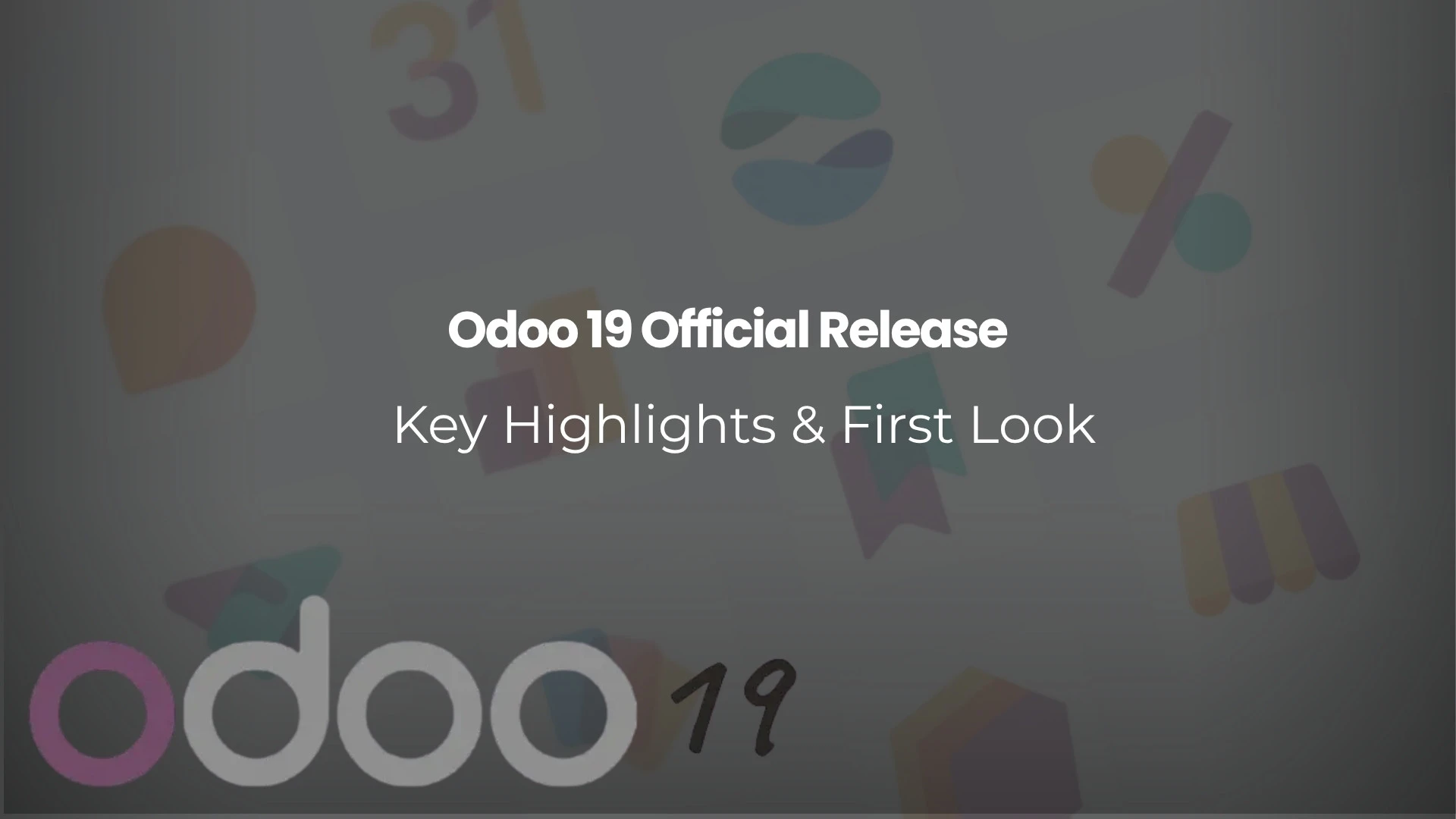Introduction
Odoo 19 is here, and it’s a real step-change: faster under the hood, cleaner up top, and much more automation-friendly across day-to-day operations. The release doubles down on usability, performance, and AI-powered workflows so teams get more done with fewer clicks.
Release timing at a glance
Public previews and feature rundowns tied the rollout to late Q3 2025, with Odoo Experience in mid-September flagged as the first big look, followed by broader availability through October. In short: this cycle focused on better usability, smarter automation, and speed.
What changed at a system level
- Speed & scale: Odoo 19 emphasizes responsiveness and horizontal scaling. Highlights include offline use, frontend caching, and read replicas—all aimed at snappier UX for large teams. Several sources frame v19 as the fastest Odoo yet.
- Cleaner UX: Streamlined views, more intuitive navigation, and mobile refinements reduce ramp-up time for new users and keep power users in flow.
- Automation & AI: Server actions, “smart” fields, and broader AI helpers cut manual steps across modules.
Website & eCommerce
Expect easier site building, improved templates, and SEO-friendlier pages. On the commerce side: flexible layouts, a smoother checkout, and integrations with Google Merchant Center plus social channels like Meta and TikTok so stores can push catalog data and reach more buyers without add-ons.
CRM & Sales
Sales teams get faster quoting and AI-supported data entry with a focus on pipeline velocity and cleaner reporting. The goal is to make interactions smoother, not heavier.
Inventory, Purchase & MRP
Supply-chain flows see better forecasting and replenishment logic, along with new inventory reports that let users replenish, reserve/unreserve, and forecast directly from the view. Packaging/UoM handling and dashboards are called out as easier to reason about.
Accounting & Finance
Compliance and automation get a lift: an audit report creator that compiles legal and accounting info into a PDF tied to Documents, improvements to reconciliation and tax handling, and broader e-invoicing coverage. Mobile reconciliation and bank syncs are emphasized across coverage.
POS (Retail & F&B)
Point of Sale is tuned for speed and flexibility, with better service flows and fewer taps to get through busy periods.
Dashboards & Spreadsheets
Odoo’s spreadsheet evolves into a more serious BI layer with AI-powered analysis inside the ERP, less tool-swapping, more in-context insight.
New & notable apps: Equity and ESG
Two standout additions for governance and sustainability:
- Equity: manage shareholder structures and transactions natively.
- ESG: measure and report environmental, social, and governance metrics (e.g., CO₂) with data flowing from core processes—useful for EU compliance regimes.
HR & Payroll
More capable leave management, skills/goal tooling, and localized payroll improvements. The thrust: less spreadsheet babysitting, more structured processes in one place.
AI everywhere (practical, not hype)
Think less “demo toy,” more “make this step disappear.” You’ll see auto-completion, natural-language queries, lead gen support, draft content for web/email, and voice-to-text sprinkled across apps—meant to remove routine clicks rather than replace judgment.
Why this matters for small businesses
SMBs get the biggest lift: integrated modules, real-time analytics, and automation deliver fewer stockouts, fewer delays, and better follow-ups. Case examples cite meaningful drops in stockouts and production delays once forecasting and inventory automation are switched on.
Migration notes (Odoo 18 → 19)
Migration is more approachable thanks to stronger compatibility checks and refined scripts. The headline is stability: keep your customizations, pick up performance wins, and roll forward without up-ending workflows.
Explore details: Developers can find related insights on Odoo 19 API Decorators to streamline automation and coding.
Enterprise vs Community
Community remains a robust base. Enterprise layers on the governance, compliance, analytics, and premium integrations teams usually end up needing as they scale. If you’re growing into heavier reporting or regulated invoicing, Enterprise fits sooner.
Road ahead
Roadmap signals more AI leverage, deeper analytics, and continuing performance tweaks—so adopting v19 sets you up for what 2026 brings rather than locking you into a “big jump” a year from now.
Final Words
Odoo 19 isn’t a skin-deep refresh. It’s faster, cleaner, and more integrated, especially for teams juggling web, commerce, supply chain, and finance under one roof. If you’ve been waiting for a release that pairs usability with serious performance/scale work, this is the one.
Ready to move to Odoo 19 with less noise and more momentum? Let’s scope your upgrade and get a pilot live.
Frequently Asked Questions
1. What’s the standout theme of Odoo 19?
Performance and practicality: offline mode, caching, read replicas, faster UI, and automation you actually feel day-to-day.
2. Any meaningful changes for eCommerce and SEO?
Yes—cleaner site building, faster pages, Google Merchant Center sync, and social channel ties for reach.
3. Does inventory get better, or just different?
Better. New reports and replenishment flows reduce clicks; forecasting and packaging/UoM handling are clearer.
4. What about finance and compliance?
You get an audit report builder, stronger reconciliation/tax handling, and wider e-invoicing coverage—all inside Odoo.
5. Are there new apps I should care about?
Yes—Equity for shareholder management and ESG for sustainability reporting, both tied into the suite.
